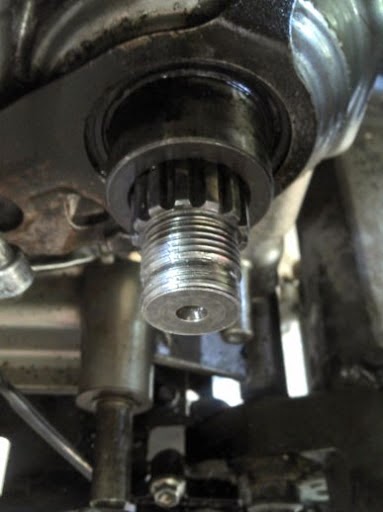The main headlights on the Vstrom are brilliant, especially after changing the standard bulbs to Osram Night Breaker's which produce a much brighter and whiter beam. However, the main problem with bikes is that the flasher can rarely been seen, especially in daylight hours. Therefore I wanted to install some additional lights to come on when I flash my main beam.
The lights are a set of cheap LEDs in a waterproof housing
The brackets are a set of universal M10 mirror mounts (ebay link)
The Allen bolts are M10x1.25p cut down to about 12mm
Making a wiring loom for your lights prior to install makes life a lot easier
This harness is wired complete with a relay using power from the aux fuse box rather than drawing more power from the lighting circuit
This shows the harness and relay in situ on the bike, wired
in to the Aux fuse box
The harness wire that has the diode is spliced in to the
head light flasher circuit.
Here is the main fuse box removed and turned upside down.
The yellow cable is the flasher circuit and the orange
cable is from the new harness.
There are several ways to do this, but as there is almost no slack
in the bike cabling,
I decided to bare the yellow wire and solder directly to it.
Twist the wires together, and let solder flow in to the join
I finished off with wrapping the join in self-amalgamating tape
I already have an auxiliary shelf installed, so this is where
I have mounted the switch
This waterproof switch is push on/push off type (ebay link)
The switch allows me to have them permanently on, or off and just
come on with the high beam flasher
Here is the finished install
The 22mm Mirror brackets are a perfect fit on the SW Motech engine bars
The wiring is cable-tied along the lower bar
This mounting arrangement provides three separate joints and provides some
nice flexibility to line up the lights exactly where you want them
Daytime image
Dusk image
Evening image















.jpg)









































